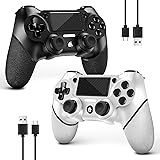Understanding the New iPhone 17 Lineup: A Comprehensive Breakdown
The annual iPhone refresh often brings incremental changes. However, a significant shift in Apple’s strategy is evident with the iPhone 17 series. The video above provides a concise, hands-on overview of these latest devices. This year’s lineup, including the base iPhone 17, the surprisingly sleek iPhone 17 Air, and the powerful iPhone 17 Pro and Pro Max models, marks a complete re-evaluation of the entire iPhone ecosystem. Past iterations frequently saw base models purposefully limited to enhance Pro offerings. This new generation, however, introduces substantial advancements across all tiers, demanding a closer look at each model’s distinct features and compromises.
The Standard Setter: iPhone 17 Unveiled
Initially, the basic iPhone 17 appears strikingly similar to its predecessor. Familiar camera layouts and button placements are maintained. Upon activation, however, the device reveals its truly “Pro-level” capabilities. The display, for instance, has undergone a significant transformation. Although the body size is retained, the screen now measures 6.3 inches, a notable increase from the previous 6.1 inches. Consequently, the bezels have been reduced to their thinnest ever on an iPhone. This enhancement is immediately noticeable, unlike the microscopic differences sometimes observed in prior models.
Furthermore, the display is fortified with Ceramic Shield 2. This coating provides three times greater resistance to scratches. Everyday durability is therefore significantly improved. Display readability has also reached new heights. Even in brightly lit environments, the screen remains clear and vibrant. This is largely attributed to the Pro’s 3,000 nits of brightness, now integrated into the standard iPhone 17. An anti-reflective coating, a first for any iPhone, further minimizes visual interruptions from overhead lighting. This advancement is clearly visible when comparing the new model to older devices. The display is completed with Pro Motion technology, enabling a 120 Hz refresh rate. It can also dynamically scale down to 1 Hz for the always-on display mode, optimizing power consumption. This feature, long requested by users, finally arrives on the base iPhone 17, redefining the standard experience.
Advanced Camera Systems in the iPhone 17
Camera improvements are also substantial within the iPhone 17. The ultra-wide camera has been upgraded from 12-megapixel to a 48-megapixel sensor. This brings it into parity with the Pro models, significantly enhancing image detail. Macro photography benefits directly from this upgrade, as the same camera is utilized for close-up shots. A novel feature allows simultaneous recording from both front and rear cameras. While its widespread application remains to be seen, the implementation is impressively slick. Users can easily drag a bubble to reposition the front-facing camera feed, reflecting instantly in the final footage.
The front camera, in particular, showcases unexpected innovation. It now captures 18-megapixel photos, an increase from 12-megapixel. Critically, a new square camera sensor has been introduced. This allows for both vertical and horizontal selfies, irrespective of phone orientation. This design provides wider and more detailed shots. Additionally, Center Stage is included, enabling the camera to automatically adjust its field of view and track subjects during FaceTime calls. These enhancements collectively suggest a departure from Apple’s previous strategy of intentionally limiting base models. The iPhone 17 now offers exceptional value, with few compromises beyond the absence of a telephoto camera.
Performance, Battery, and Storage Upgrades
The iPhone 17 also charges faster than its predecessor, the iPhone 16. Battery life has seen a significant boost; Apple claims an additional 8 hours of video playback. The device is powered by the new A19 chip, delivering a 20% performance increase. While not a “mind-blowing” upgrade, it contributes to a smoother overall experience. In a move uncharacteristic for Apple, the base storage has been doubled to 256GB, up from 128GB. Despite these numerous enhancements, the starting price remains at $799, consistent with the previous generation. This pricing strategy makes the iPhone 17 arguably the best value proposition in the current lineup.
Introducing the Striking iPhone 17 Air
Apple has introduced the completely new iPhone 17 Air, priced at $999. This model attempts to fill an “awkward middle child” slot within the product lineup. Previous attempts, like the iPhone Mini (2020) and the iPhone Plus (2022), failed due to misaligned consumer preferences. Instead of altering size, Apple has prioritized thinness. The device measures an astonishing 5.6 mm. This makes it thinner than any previous iPhone model. It is also slimmer than competitors like Samsung’s Ultra Slim Galaxy S25 Edge. The iPhone Air is even thinner than a standard pencil.
Despite its extreme thinness, the device conveys a luxurious feel. The initial impression of flimsiness is dispelled upon handling. A glossy titanium rail encircles the sides, complementing the ceramic shield on the back. This combination provides a premium tactile experience. The iPhone 17 Air targets users who desire more than the base iPhone 17 but are not overly concerned with the comprehensive specifications of the Pro models. These users will likely perceive its design as miraculous. However, this thinness necessitates fundamental compromises. A smaller battery is included, though Apple assures “all-day” power. This claim is questionable, especially given the simultaneous release of a MagSafe power bank designed for the Air. Additionally, Apple’s quoted battery life assumes this external pack is attached. It is stated that due to A19 and N1 chip efficiencies, the Air matches the iPhone 16 Pro’s battery life. This assertion requires independent testing for verification.
Compromises for Thinness: iPhone 17 Air
Battery performance is not the only concession in the iPhone 17 Air. Slower charging speeds are observed. The device features only one speaker, a significant limitation in 2025. Furthermore, the ultra-wide camera found in the standard iPhone 17 is absent. The single 48-megapixel rear camera is decent, mirroring the iPhone 17’s main sensor. Nevertheless, a single rear camera on a $1,000 phone in late 2025 emphasizes form over function. This strategy mirrors the MacBook Air’s success, a product now Apple’s best-selling laptop. However, the benefits of extreme thinness in a phone may not outweigh its functional drawbacks for many consumers. The A19 Pro chip powers the Air, promising pro performance. A notable performance gap compared to the actual Pro models is anticipated, however, due to thermal limitations.
The Professional’s Choice: iPhone 17 Pro and Pro Max
The advancements in the base iPhone 17 and the aesthetic appeal of the iPhone 17 Air have liberated Apple’s Pro series. For the iPhone 17 Pro and Pro Max, functionality now takes precedence over form. These models are clearly designed for professionals. This shift justifies their higher price points: $1,099 for the Pro and $1,199 for the Pro Max. These represent some of the highest prices for non-XL devices.
Design and Battery: Functional Enhancements
A function-first approach is immediately apparent in the iPhone 17 Pro and Pro Max. Both models are almost 8% thicker than their predecessors. While less stylish by conventional measures, this increased thickness accommodates significantly larger batteries. The iPhone 17 Pro boasts up to 33 hours of battery life, a substantial improvement from the iPhone 16 Pro’s 27 hours. The Pro Max extends this further, offering 39 hours. This design decision also inadvertently makes the Air appear even thinner when held side-by-side, creating a stark visual contrast.
The Pro models’ aesthetic is also distinct from last year’s. Historically, smartphones combined metal sides with a glass back for wireless charging. Glass, however, is inefficient at dissipating heat. The iPhone 17 Pros now feature metal construction everywhere, except for a specific ceramic shield window necessary for wireless charging. This design compromises on minimalist aesthetics. However, the metal chassis is approximately 200 times more effective at conducting heat away from the internal components. This is paired with a vapor chamber, a first for an iPhone, further enhancing thermal management. The material choice has also shifted from titanium to aluminum. Aluminum is lighter than titanium and over 10 times more conductive. It also facilitates easier coloring, resulting in a striking bronzy orange finish. This color is the first truly interesting Pro iPhone color in a long time. This material change, however, quietly reverses Apple’s previous stance, where titanium was a major selling point for the iPhone 15 Pros.
Performance and Camera Innovations in the iPhone 17 Pro
These thermal enhancements in the iPhone 17 Pro and Pro Max are crucial. They ensure the devices run significantly cooler, leading to better sustained performance. The new A19 Pro chip performs optimally under these conditions. Mobile gaming, for instance, exhibits unprecedented graphical fidelity and smoothness. Improved thermal regulation also means faster charging. Charging speeds are often throttled when devices overheat. This also means the screen will be less likely to dim itself in warm conditions. The Pro models receive the same innovative square front camera sensor found in the base iPhone 17. This allows for versatile vertical and horizontal selfies.
A key camera change involves the telephoto lens. It transitions from a 5x optical zoom at 12-megapixel resolution to a 4x optical zoom with a 48-megapixel resolution. This represents a double-sided upgrade. First, the telephoto camera engages earlier in the zoom range. This improves quality at closer zoom levels. Second, the significantly higher pixel count means photos retain better detail, even at extended zoom. Therefore, despite a slightly lower optical zoom number, the overall zoomed image quality is enhanced. The iPhone 17 lineup represents a substantial evolution. The base iPhone 17 is surprisingly capable. The iPhone 17 Air offers a compelling design. The iPhone 17 Pro models prioritize raw functionality and performance. These new iPhones offer a diverse range of options for users seeking the latest mobile technology.









